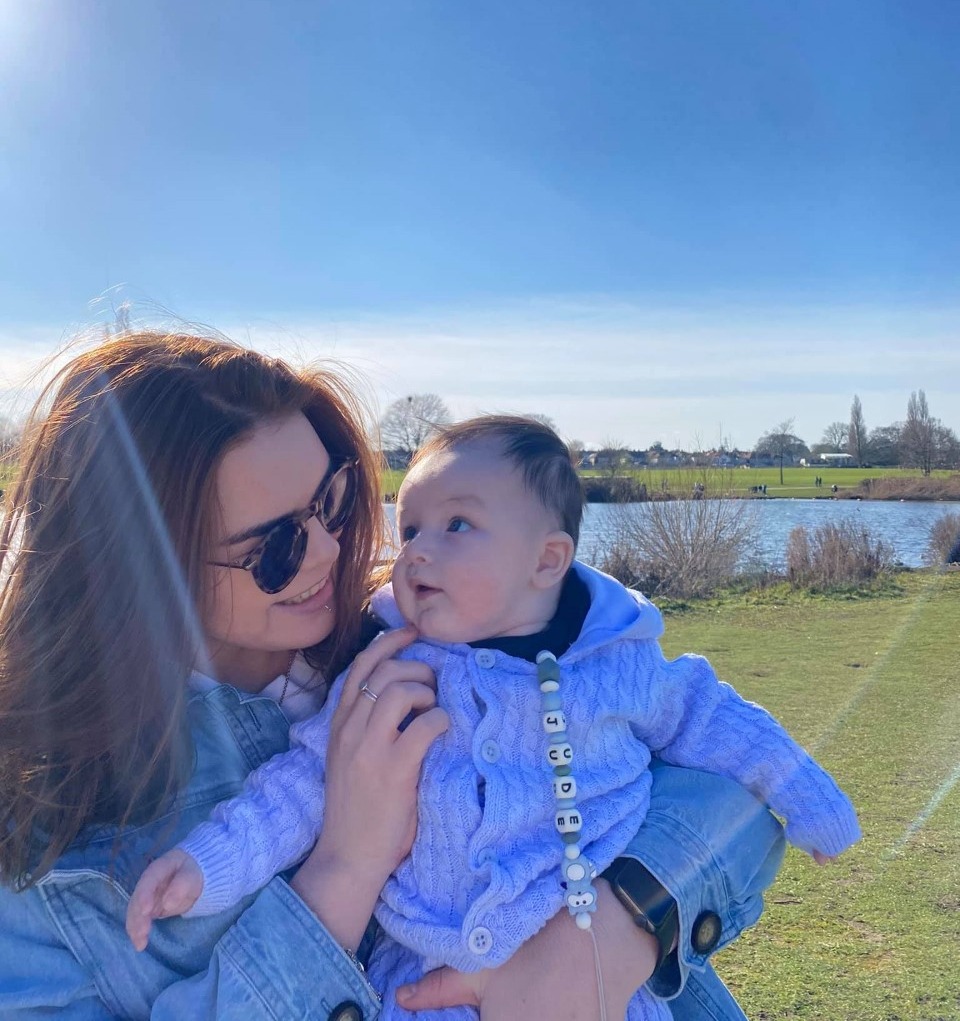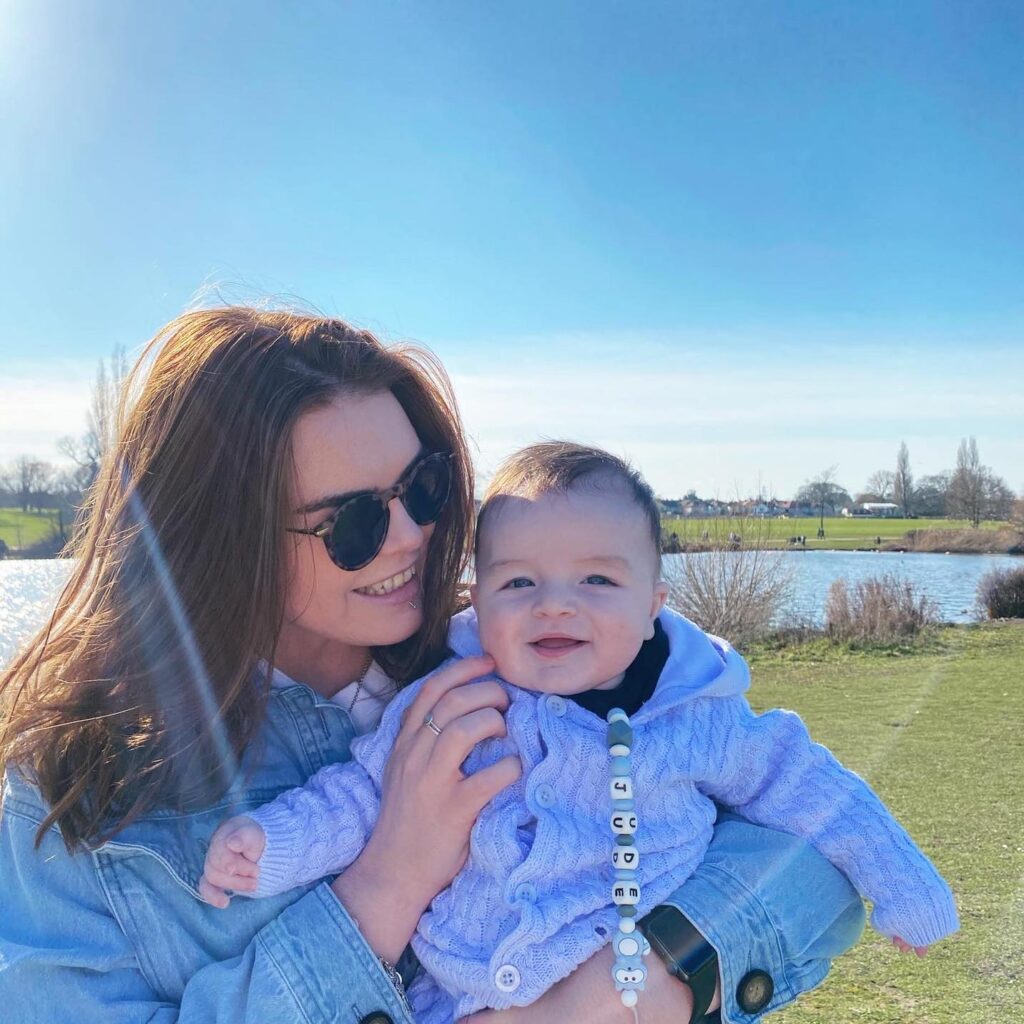I want to talk a little bit about retained placenta. Before I developed this post-birth complication myself I never even knew it could happen. So in the following paragraphs I’ll tell you a bit about what retained placenta is and my personal experience with it. Even though it’s an issue which is relatively rare, some women do experience it. Therefore it’s my goal to raise awareness about this complication so that women may recognise if it’s something they’re enduring themselves or help understand other women who do.
What is Retained Placenta?
Following the birth of a baby you move into the third stage of labour which is when the placenta is delivered. On some occasions the full placenta or fragments of it may be left behind in the womb. If left untreated, this can give rise to life-threatening bleeding.
On average a retained placenta occurs following 3% of vaginal deliveries. For the most part it is a rare post-birth complication. And is even rarer following cesarean deliveries.
There are three main reasons known why this issue can occur. Firstly, it can happen due to the uterus not continuing to contract after the baby is delivered. Secondly, it can occur if the umbilical cord snaps during the delivery. And thirdly, is when the placenta is attached unusually deep into the wall of the uterus.
However, there are particular factors which increase the risk of retained placenta:
- Women over the age of 30
- A prolonged first and second stage labour
- A premature birth
- Stillbirth
Symptoms of Retained Placenta
In most cases retained placenta can be diagnosed straight away following the delivery of a baby. But sometimes some placental tissue or membranes can remain in the uterus unknown to the midwife post-delivery. When this occurs it can initiate infection and excessive bleeding. Key symptoms to monitor in the following weeks are:
- Fever
- Odorous discharge from vaginal area
- Enlarged blood clots
- Heavy bleeding – not to be mistaken for lochia which can occur up to 12 weeks postpartum
- Flu like symptoms
- Abdominal pain
Personal Experience with Retained Placenta
It’s important to note before I explain I was not at increased risk of having retained placenta. My situation evolved due to a complicated and traumatic labour. Moreover, I only experienced two of the symptoms at an excessive standard. For that reason, I shall add if you experience even one of the above symptoms do follow it up with your GP or Midwife Team.
The Labour
One hour before the delivery of my beautiful baby boy I developed a 39 degrees celsius fever. It was swiftly recognised I was in the severe stage of a reaction to an infection called sepsis. I was given IV antibiotics and continued to await until it was time to push. However, when my baby was exiting the birth canal the umbilical cord was tightly wrapped around his neck. The emergency buzzer was pushed, 10 staff members swooped in, I was given a surgical cut called an episiotomy, and the umbilical cord was pulled and cut in order to prevent it from suffocating my newborn. I was then injected with syntocinon and my placenta followed completely ragged. It was weighed and assumed a complete placenta. This part of the labour was quickly set aside whilst me and my baby were then prioritized to be checked over due to the severe sepsis I had developed beforehand. What is more, I began to haemorrhage immediately after and was experiencing rapid blood loss. I was so delirious at this stage it was like it all happened in a flash. I stayed in hospital for 3 days following and was not informed about any risk in regard to the ragged placenta which was delivered.

Diagnosing Retained Placenta
The First Sign
The realisation that I had retained placenta happened in stages and was an extremely frustrating process. I knew when I returned home from hospital that I didn’t feel well. However I’d never had a baby before and assumed the excessive pain, bleeding and fatigue were normal. Two weeks passed and these symptoms were still prominent. This is when I passed my first clot which I would describe the size of two golf balls. I called my maternity ward to request advice and in return was told to “keep an eye on it”. I felt uncomfortable with this advice because before leaving hospital they inform you to be seen in the happenstance that you pass unusually big blood clots. But in this case I felt like I was nuancing the helpline with my health concern.
The Following Warnings
The second alarm bell rang when I began bleeding in a way which I can only describe as a tap being turned on. I made an in person visit to the maternity ward without calling in advance. I was checked over on this occasion and sent home being led to believe I was experiencing a heavy period – already? Again, I felt like I was burdening the team because I was repeatedly told by staff how busy they were hence why I was left waiting 5 hours to be seen. This happened 4 more times. Little did I know I was sitting around with a life-threatening condition which was worsening by the day. And in all honesty, I didn’t feel like the health team were all that interested in diagnosing the problem.
Being Diagnosed
Thankfully, on the last visit I was issued a scan where they found tissue which equated to half the size of a placenta left in my womb. I’ll say that again – half of my placenta was still in my body. I was immediately given more antibiotics and booked into surgery 3 days later. It was then I was informed that my discharge notes had been incorrectly filled in which meant none of the doctors who had reviewed my bleeding previously even considered retained placenta a potential threat. This was 5 weeks postpartum and if I had not been already taking a course of oral antibiotics due to the sepsis I would have died due to this post-birth complication. I found it mind-blowing how I’d been drawing attention to my symptoms for weeks and yet had been repeatedly sent home, gaslit into believing it wasn’t a big problem.
The Day of the Surgery
Arriving on the Day
The day of the surgery itself was daunting. I’d never had any type of surgical procedure before and the process felt completely alien to me. I arrived at 10am, warmly greeted by the receptionist and asked to take a seat. I was the second person to arrive at the day surgery centre and I slowly watched the room fill up with other people who were awaiting their surgery’s too.
The surgical procedure I ended up having was called the Evacuation of Retained Products of Conception. However, this wasn’t the initial surgery I was meant to have. Before you get taken to the theatre you meet with the team who are going to be operating on you. You go over all the paperwork and they repeat the same questions again, and again, and again. I think this is to confirm your understanding of what is about to happen. I signed off on multiple surgical procedures in case for any reason the initial surgery couldn’t go ahead. I was originally meant to have a laparoscopy procedure.
Going to Theatre
As I was escorted round to the theatre I became increasingly nervous. I’d never been put under general anaesthetic before and silly enough I was more nervous about that than the surgery itself. I laid down on the bed and was wrapped up like a cocoon in the warmed up blankets they provide. The IV was attached and within a matter of seconds I was under. I awoke in a different room, with a woman standing incredibly close to my face talking to me. Kind of like something you see in a movie. I examined the room – I was the only one in there. I then looked at the clock and realised I’d been under for nearly 3 hours. My surgery was estimated to be 30 minutes maximum so I was incredibly confused.
Having awoken I was wheeled round to the ward I was on previously and noticed I still had an IV drip when the other woman in the room didn’t. My surgeon came to me once I was back on the ward to explain how the surgery hadn’t gone to plan. Apparently before beginning the surgery they noticed I was losing an excessive amount of blood and had to change course. First they had to give me a blood transfusion whilst I was under, followed by a course of antibiotics and other medications before performing a different surgery. Yet to my surprise, I felt fine. It was strange to think so much had just gone on with my body but it’s like I’d taken a nap and slept through. Fortunately after monitoring me for a few hours they decided I was well enough to go home to rest instead of staying overnight. To this I was incredibly relieved because I just wanted to get home to my baby.
Post-Surgery
After the surgery I felt like a new woman. Admittedly, I felt strange for the first week after it. But for the first time since giving birth I felt refreshed after sleeping and I wasn’t worrying whether I would bleed out on the floor. Most importantly, I could finally enjoy holding and comforting my baby without excruciating pain in my stomach or worry.

And what a beautiful baby he is to love and enjoy with full health!
My main goal in sharing my experience is to raise awareness about this post-birth complication. Before it happened to me I was naive to ever believe something like this could ever occur.
Advice for Future Mummys
Trust your instincts! You know your body better than anyone. If you feel unwell following the birth of your baby inform your local GP or Maternity Unit. They are there to help. Whether that be emotionally or physically, your health is a priority! A baby’s best friend is a happy healthy mumma.
Sources for More Information
Our Guest Blogger: Teri Butcher
This blog has been fantastically written by Teri Butcher. Be sure to head over to Teri’s Social Media accounts listed below and give her a follow.
Instagram: @teriteatime
Twitter: TButcher1997
Enjoyed reading this blog? You can also read other blogs written by Teri on her website here.
